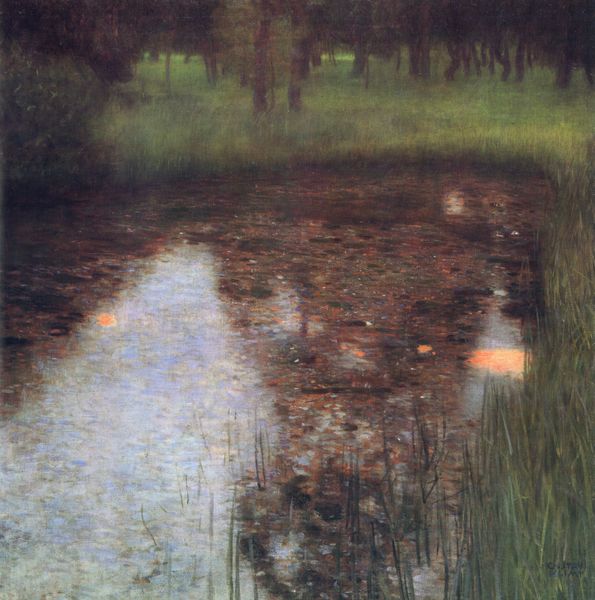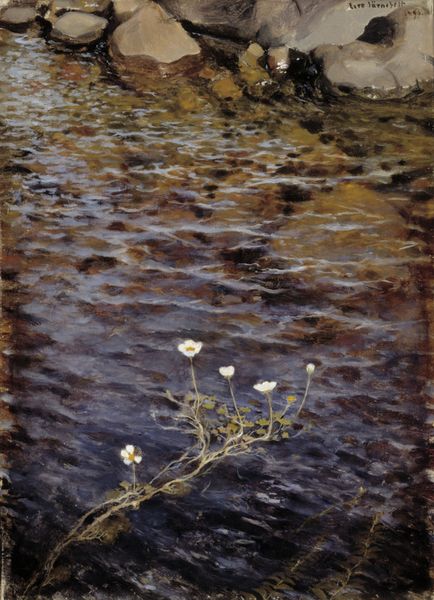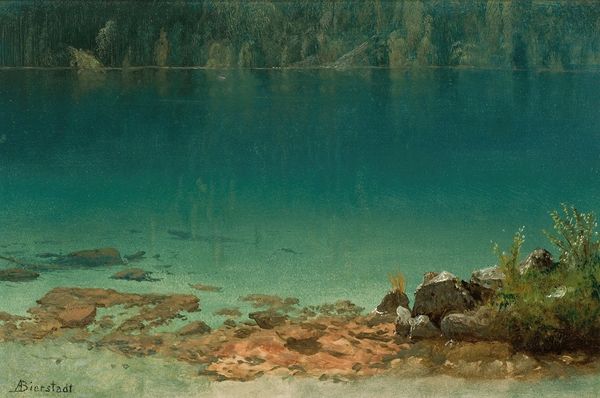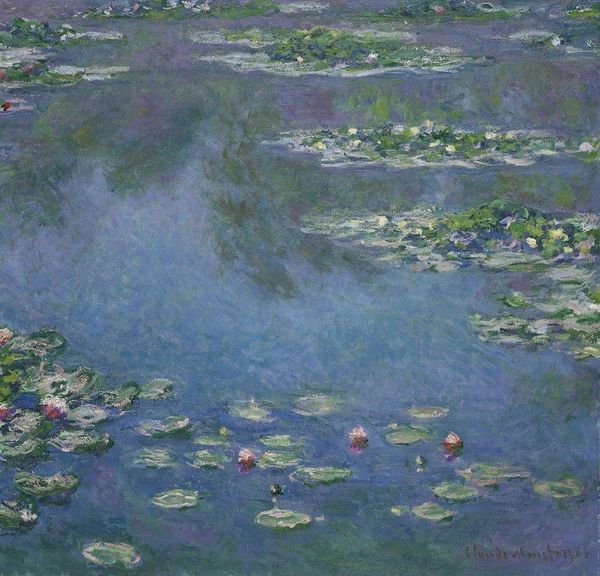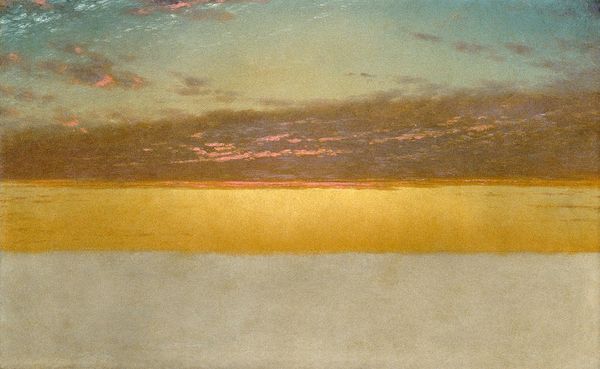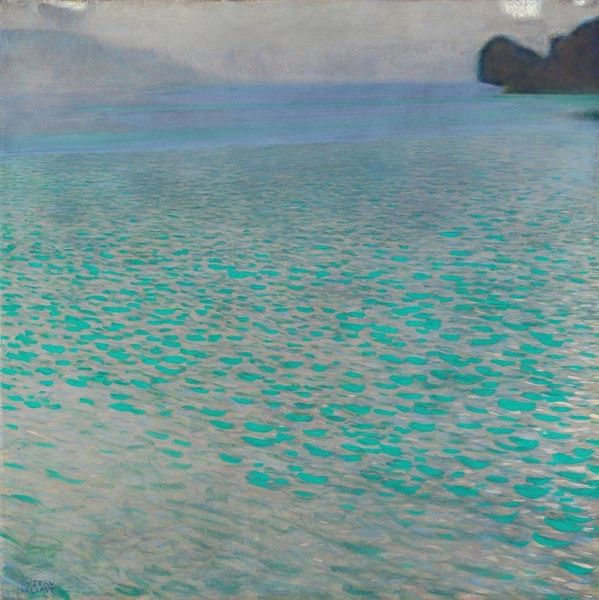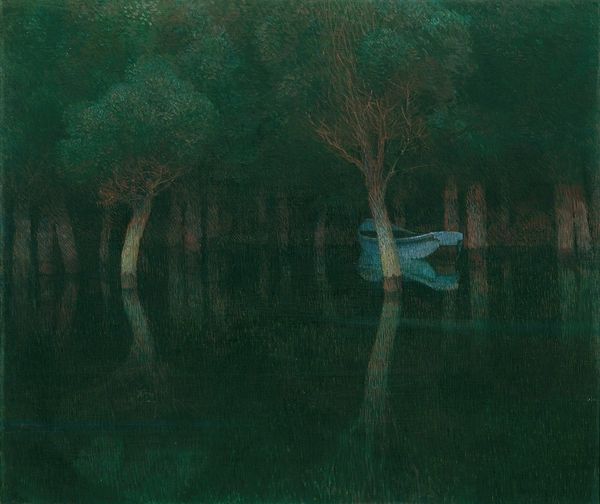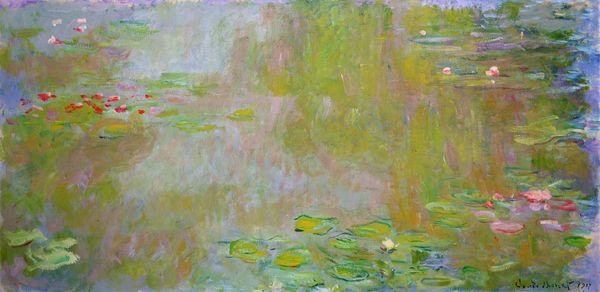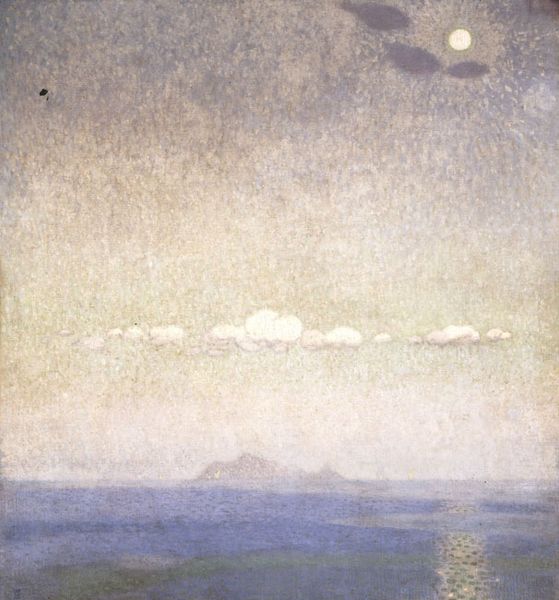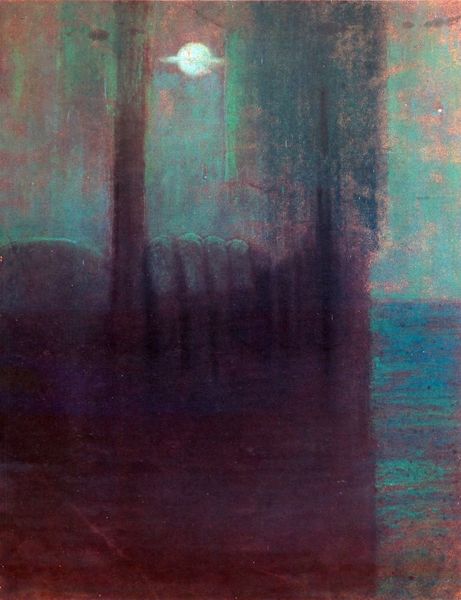
Copyright: Public domain
Editor: Klimt's "Island in the Attersee," painted in 1902 with oil paint, is captivating! There’s almost no horizon line; it feels like pure contemplation of the water’s surface. What do you see in this piece? Curator: I see a powerful meditation on water as a symbol. Water often signifies the unconscious, the source of life, and the constant state of flux we experience internally. Think of the symbol of a still lake, as we see depicted in the painting: its surface might seem calm, but it reflects a whole world above it, hinting at the hidden depths below. Editor: I see that now! The ripples almost feel like hieroglyphs. Curator: Exactly! Klimt uses these brushstrokes almost as a visual language. Each one a small ripple in time, contributing to the larger narrative of nature’s enduring presence. And note the absence of people. What does that emptiness signify, if anything? Editor: Perhaps the idea that nature exists independently of us? The island in the background seems like a silent witness. Curator: A powerful silent witness to the ever-changing, yet fundamentally constant, nature of being. The painting becomes a mirror, inviting us to contemplate our own place within that flow. Editor: I hadn't considered that before. It really makes you think about your relationship to the natural world, its stability and fluidity. Curator: Indeed. Klimt's genius lies in his ability to imbue the everyday with symbolic weight, urging us to look beyond the surface, quite literally in this case, into the deeper currents of meaning.
Comments
No comments
Be the first to comment and join the conversation on the ultimate creative platform.
